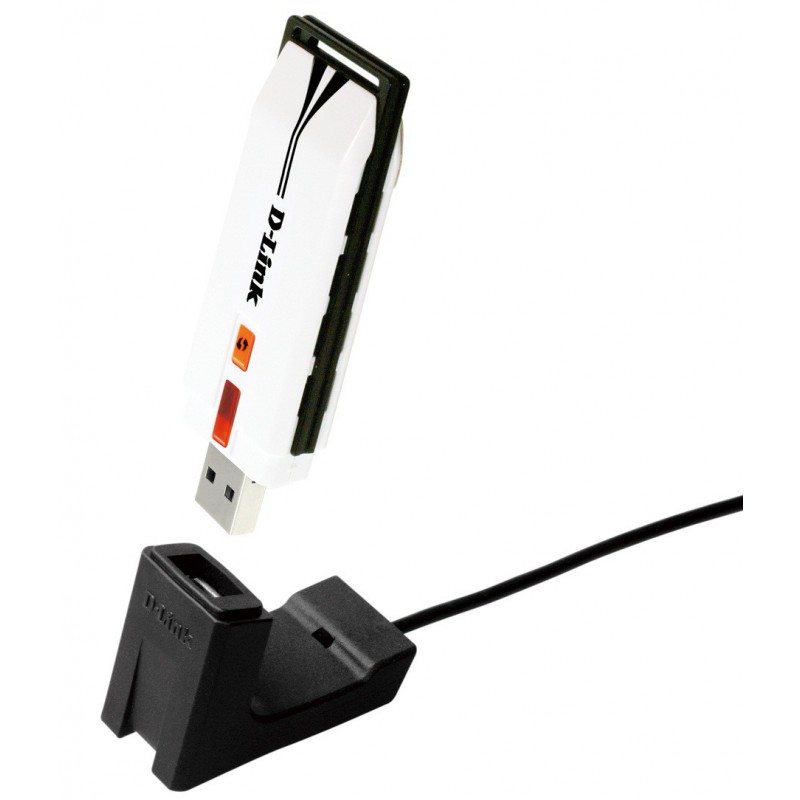

- #D LINK DWA 160 XTREME N DUAL BAND USB ADAPTER INSTALL#
- #D LINK DWA 160 XTREME N DUAL BAND USB ADAPTER DRIVER#
I was then able to get back onto the 5Ghz channel. I connected on 2.4Ghz, and ended up having to manually set a channel (5.745 Ghz although I’m sure you can try others and they’ll work – the “Auto Channel Scan” just wasn’t doing it for some reason). All of a sudden I couldn’t connect on that band anymore. I set those up, and also chose “N-only” for the 5Ghz band. The short version is that you have to use these:Ģ) 24/40Auto as the Channel Width (set up in the router)
#D LINK DWA 160 XTREME N DUAL BAND USB ADAPTER INSTALL#
Yes, unlike some USB stuff (keyboards, mice, storage devices, etc) you will need to install the drivers for this thing.Īfter installing and connecting to the network, I popped onto the D-Link forums and came across a thread with 300Mbps Connection Requirements.

It’s got drivers for XP and Vista (32 and 64-bit).
#D LINK DWA 160 XTREME N DUAL BAND USB ADAPTER DRIVER#
The DWA-160 comes with an extender (cable’s about 4 ft long) and a driver CD. If you’re building (or replacing) a home network, it’s certainly something to consider.ĭ-Link DWA-160 Xtreme N Dual-Band USB Adapter Review (short) I could see it being particularly great for those who throw a LAN-party and have some friends with finicky wireless on their laptops. If anyone in your household is having issues on 1 band, they can simply try the other. You don’t lose anything by getting “dual-band” equipment, and the plus-side (in the case of D-Link’s dual-band router anyway) is that you basically have 2 wireless networks going at the same time – one on 2.4 and one on 5Ghz. The biggest downside is that the routers and network adapters that use it are a fair bit more pricey. Really, 5Ghz really has a lot going for it.

Only 5GHz supports the bandwidth, capacity, and throughput required for enterprise quality voice, video, and data applications.Īlthough 802.11n supports both bands, the available channels, bandwidth, and client capacity makes the 5GHz band the obvious choice.Įven though the 2.4GHz band has greater range than 5GHz, proper deployment using directional antennas can eliminate any issue. With 8 times the number of channels to chose from in the 5GHz band, planning is far simpler than the 2.4GHz band. Wi-Fi in 2.4GHz competes with microwaves, Bluetooth, wireless phones, etc.

Restrictions in the 2.4GHz band limit the number of simultaneously channels to 3, while the 5GHz band offers up to 24. Here’s the best breakdown I found for 2.4Ghz vs 5Ghz (lifted from an old page that no longer exists):īoth choices support up to 54Mbps of bandwidth today and up to 300Mbps when the new 802.11n standard is deployed. If you just want to see what I have to say about the D-Link DWA-160 Dual Band Wireless N USB adapter, skip down a bit.ĭid some research. If you’re a bit new to this as well, keep reading. They supported both 5Ghz and 2.4Ghz but that’s all the box in the store told me (aside from the extremely helpful worthless marketing). Where I was stuck was trying to figure out was if I should be going for one of these “Dual-Band” Wireless-N thingies or not. After years of not having to worry about wireless, I was forced to buy a new router to replace a fried one (lightning) and was now looking at wireless-N.


 0 kommentar(er)
0 kommentar(er)
